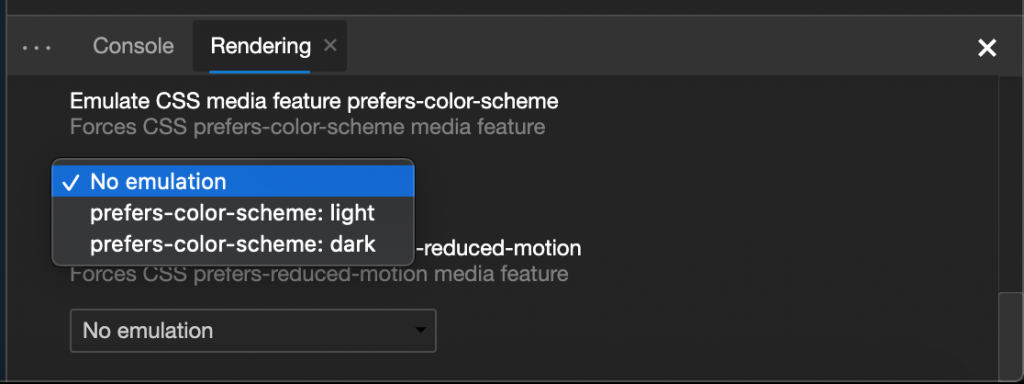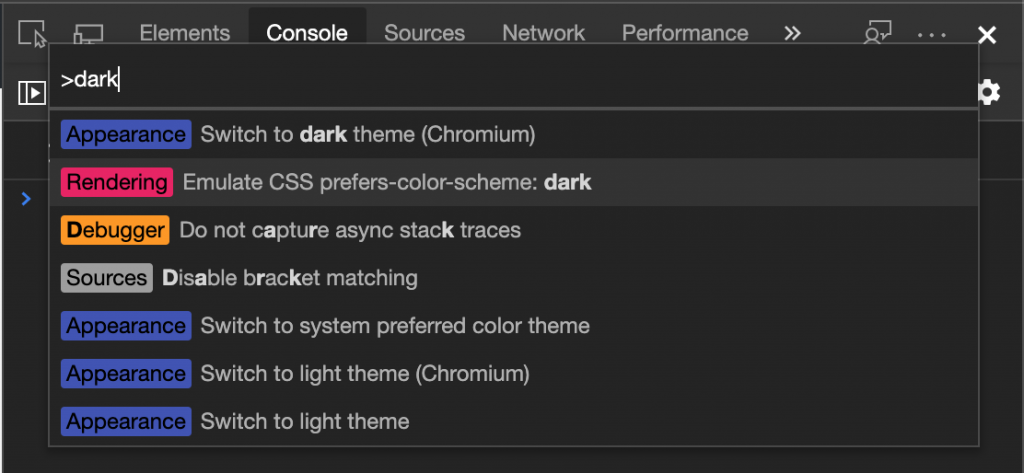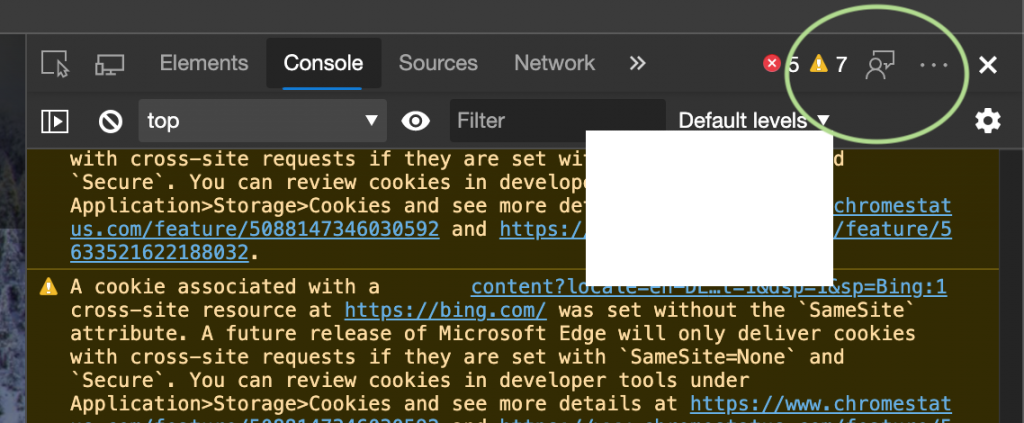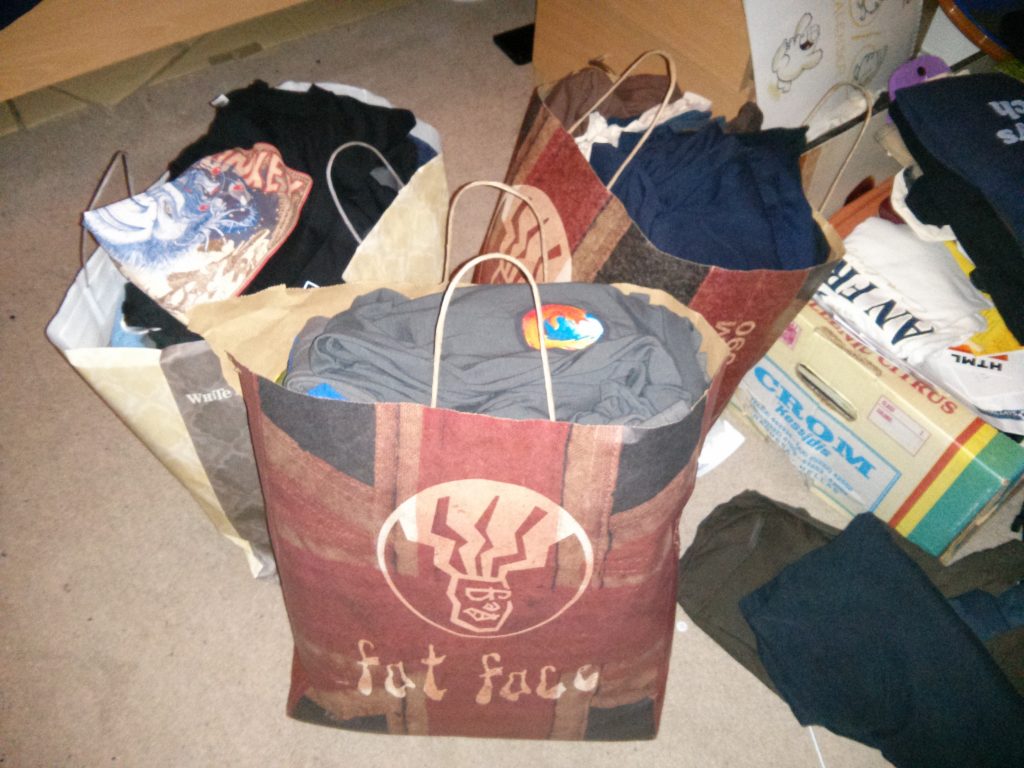
I attend a lot of conferences and have done so for the last ten years or so. I just moved and had to pack and unpack a lot of things I accumulated over the years. Sifting through piles and piles of T-shirts, hoodies, stickers, connectors, leaflets, tote bags, bottle openers, phone chargers, memory sticks, lanyards and so on made me think.
I understand that I am in a massive position of privilege as someone who can attend a lot of events and speaking at them. I am also aware of how cool it was to attend my first event (PHP conference 2004, Amsterdam) and get a PHP plushie elephant, T-Shirt and stickers. I also understand that for companies giving out swag at events is a good marketing strategy. Sensible swag is a great thing. I do use my totes to go shopping. Some of the power plugs and phone chargers I got at an event saved me from running out of battery.
The problem though is that a lot of the things you get at events don’t have a long time until they are obsolete. I have a few powerbanks that are woefully under-equipped for today’s mobile needs. I have charger cables that don’t connect to any of today’s electronics.
Often there is a hoarder mentality taking over and when we go to events, we grab as many things as we can. Once the rush ebbs down we sit at home in our hotel room looking at the loot and wondering what the hell we did take this for. When I go to conferences I tend to make it worth while by adding a few days for office or customer visits. It is depressing to go through a big hotel and see cleaners throw away piles of branded things from the conference the day before. We should do better.
Now, I am not a conference organiser. I organised one and that was hard enough to avoid being wasteful. So I am not putting the blame on people as many are want to do on the internet. There may be valid reasons for things being the way they are. Talking to conference organisers I also heard that attendees expect a few seemingly superfluous things. Without a T-Shirt you’re never going to wear again it wasn’t a good conference, right?
There are a few events that do better. I am a big fan of Beyond Tellerrand. Marc, the organiser makes sure of a few things each time:
- That the T-Shirt looks great and is something designed for you to wear outside of our little world.
- That swag given out by conference sponsors are sensible, reusable things.
- That there is a bin for swag that people don’t want on the way out
- That you can leave your lanyards for re-use
- That there is a sticker exchange table. If you have some left over, you can bring them and someone who will get excited about them can take them
A few other conferences have taken on similar approaches. Halfstack has a pub quiz at the end of it where prizes are often swag from older editions or other conferences.
Speaking of which, there is a real issue with re-use and what to do with swag you have. Most clothing collection points are not that interested in conference T-Shirts as they don’t keep the homeless that warm. And most second hand stores don’t want anything with a company logo on it that isn’t a clothing brand. I used to give out lanyards to local schools for the kids to keep their keys on. This also ceased as schools don’t want branded things.
When I left England, I did a goodie table at State of the Browser with old conference and company T-Shirts. This went down well, a lot of attendees took them away and marvelled at the design of 2006 del.icio.us and Flickr shirts.
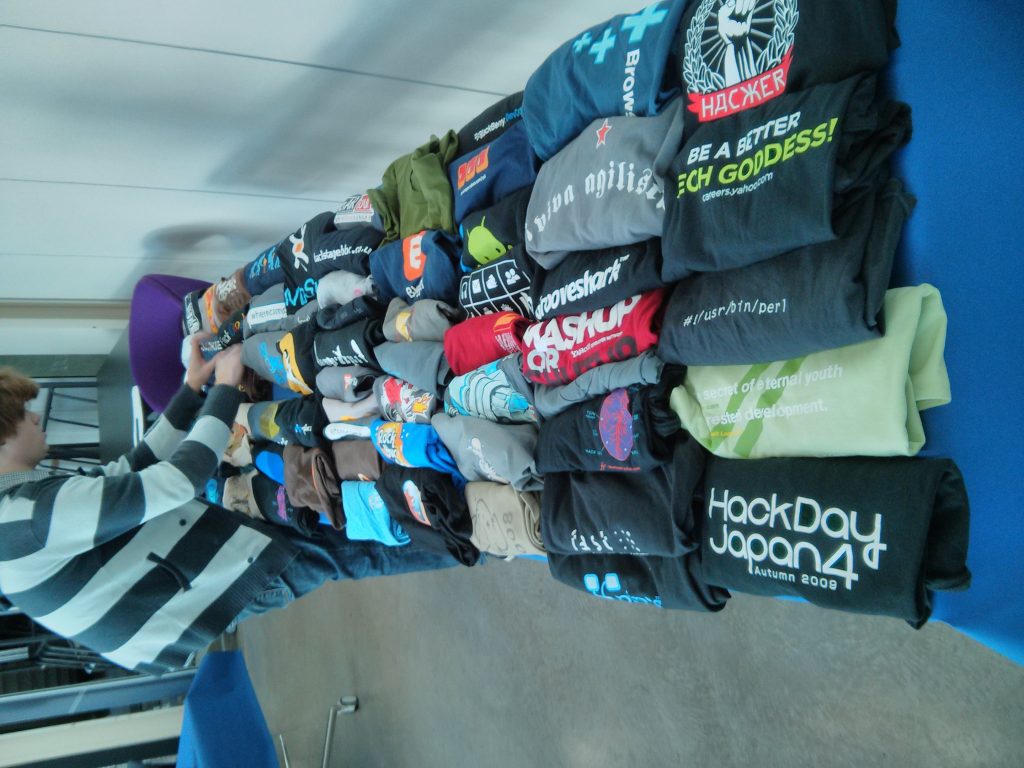
This week I went to the office and made a swag table for people to take what they fancy.
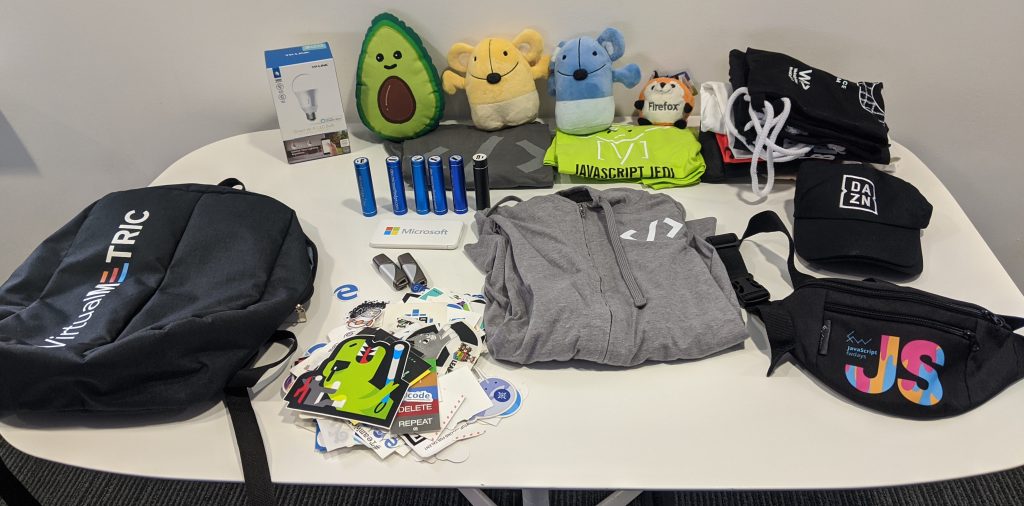
This also works, but it is all damage control.
I started doing a few things that may also work for you:
- I bring my own lanyard to conferences.
- I take a photo of my badge and keep it there for recycling (if the conference offers that)
- I don’t take shirts unless they are really cool. I do ask around the office if people want some when I go to a conference though.
- I don’t take goodie bags without checking first what’s in them. Most of the time I skip them. Again, I am privileged. This is not an attack at people who enjoy their bags for the one conference they attended.
This may not save all the issues of the planet. But the way we as conference attendees act can inspire organisers to offer recycling and sponsors to think harder what to put their logo on.
I feel weird about this. I know people put lots of effort into giving us extra value at the conferences we attend and for some attending that tote bag or backpack is the best thing ever. To me, however, I don’t want to have more things I don’t need and I can’t give to others. So don’t be offended if I skip on the goodie bag or the speaker gift, I don’t mean to offend, I just want to live with less things to carry.

